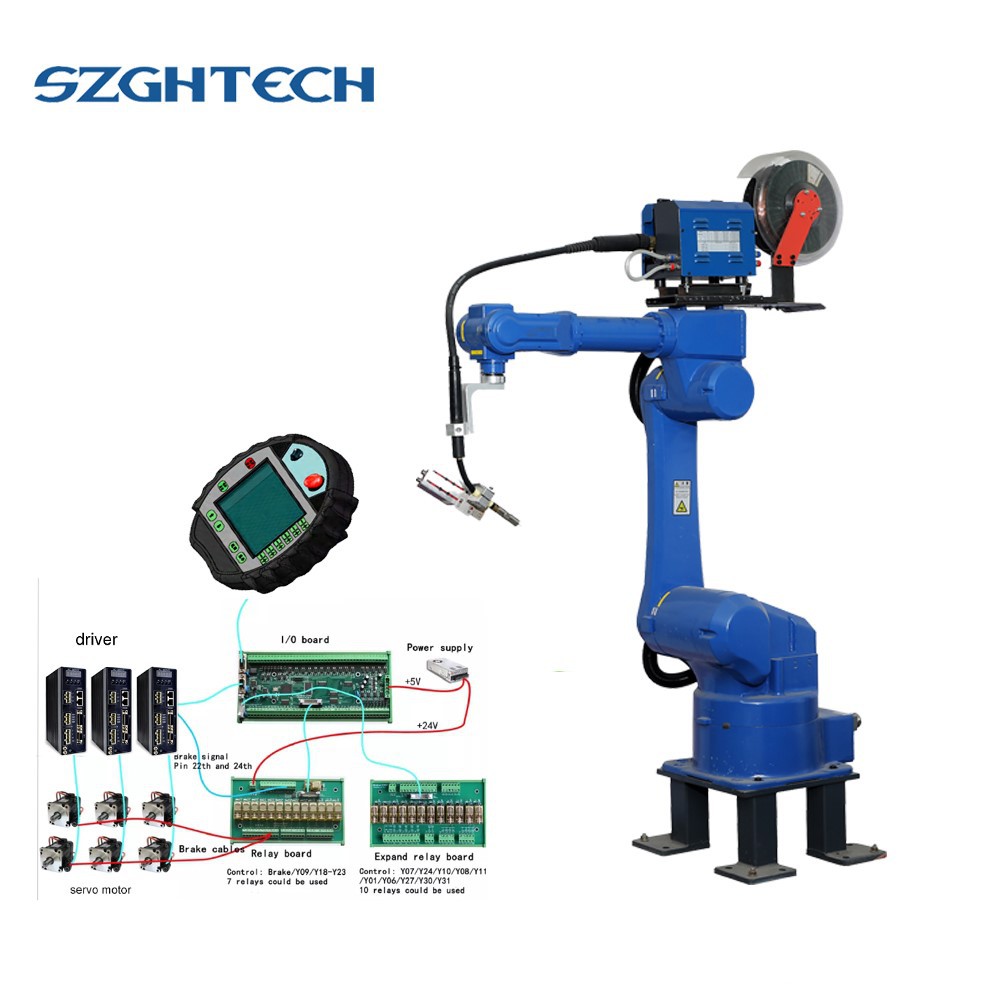Robot arms can be classified into different types based on their structure and characteristics. Here are some common classifications of robot arms along with their characteristics:
1. Cartesian Robot: - Structure: Consists of three perpendicular linear joints, resembling a Cartesian coordinate system. - Characteristics: Simple structure, precise movement along X, Y, and Z axes, good for pick-and-place operations and linear movements.
2. Cylindrical Robot: - Structure: Consists of a rotary joint at the base and a prismatic joint for vertical movement. - Characteristics: Circular workspace, good for handling cylindrical objects, limited reach compared to other types.
3. Spherical Robot (Polar Robot): - Structure: Consists of a spherical coordinate system with a shoulder, elbow, and wrist joint. - Characteristics: Wide range of motion, flexible and dexterous, suitable for tasks requiring orientation changes and access to various positions.
4. SCARA Robot (Selective Compliance Assembly Robot Arm): - Structure: Consists of two parallel rotary joints for horizontal movement and a prismatic joint for vertical movement. - Characteristics: Fast and precise in X and Y directions, rigid in Z direction, suitable for assembly tasks and operations in a horizontal plane.
5. Articulated Robot: - Structure: Consists of multiple rotary joints connected in a serial chain. - Characteristics: Highly flexible and versatile, capable of complex movements, good for tasks requiring multiple degrees of freedom and human-like motion.
6. Delta Robot: - Structure: Consists of three parallel rotary joints connected to a moving platform. - Characteristics: High speed and precision, lightweight design, commonly used for high-speed pick-and-place operations in packaging and assembly.
7. Collaborative Robot (Cobot): - Structure: Can have various configurations, often with multiple joints and sensors for safe interaction with humans. - Characteristics: Designed to work alongside humans, equipped with safety features, can be programmed easily, suitable for collaborative tasks and small-scale applications.
These classifications provide a general overview, and there can be variations and hybrid designs based on specific applications and requirements. The choice of robot arm depends on the desired workspace, payload capacity, reach, precision, speed, and the nature of the task to be performed.


